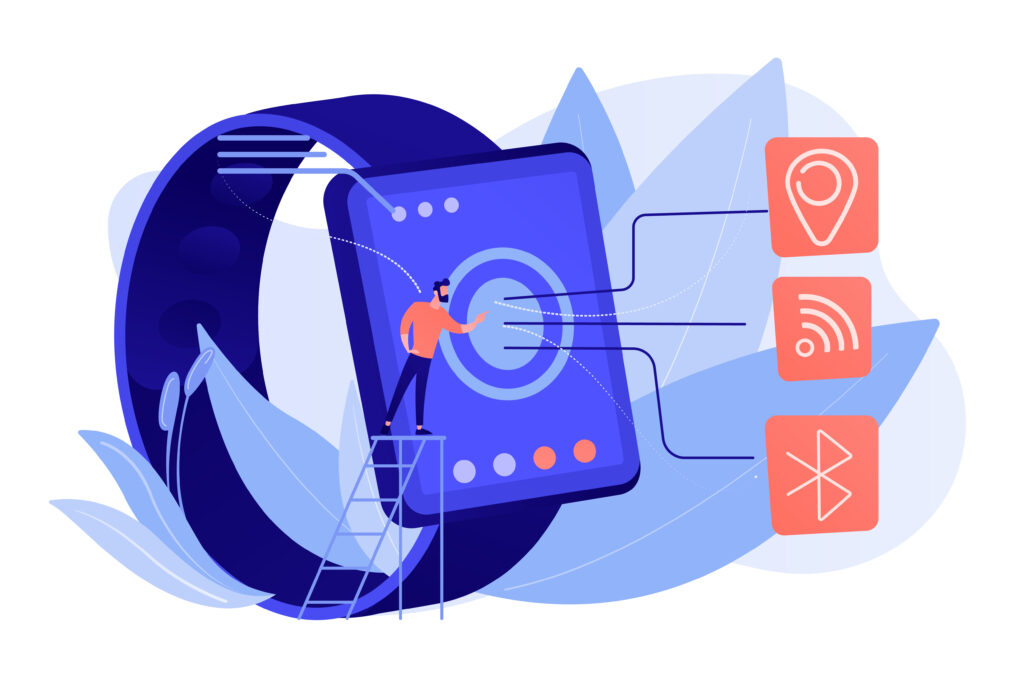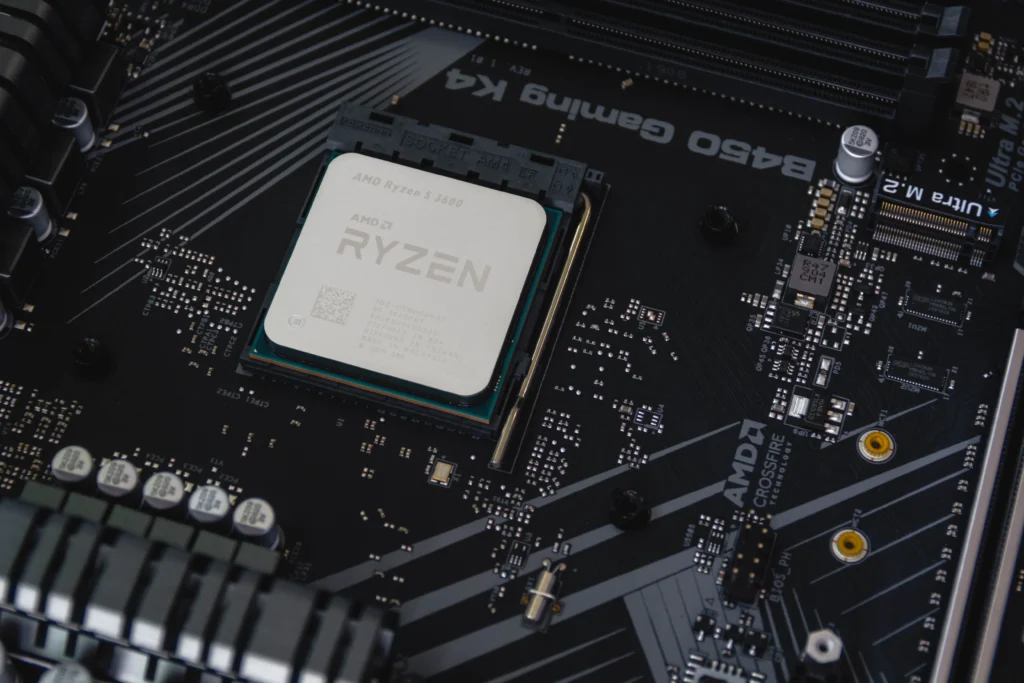Wearable technology has swiftly transitioned from the realm of science fiction to becoming an integral part of our everyday lives. From fitness trackers to smartwatches, these devices are changing the way we interact with the world. This article explores the future of wearable apps and how they are reshaping various industries.
Health and Well-being
Wearable technology has tremendous potential in the health and wellness industry. These devices can monitor vital signs, track physical activity, and gather valuable real-time health data. This data can be analysed to gain insights into individuals’ health, detect anomalies, and even predict potential health issues in the future.
Moreover, wearable devices could play a significant role in remote patient monitoring, enabling healthcare professionals to track their patients’ conditions and react promptly when necessary. Personalized health advice delivered through wearable devices can also contribute to healthier lifestyles and disease prevention.
Fitness and Sports
Fitness and sports were among the first industries to embrace wearable technology, a trend expected to continue in the future. Advanced fitness apps can monitor parameters like heart rate, calories burned, sleep patterns, and more. As sensor technology improves, these trackers will offer even more accurate and comprehensive biometric data.
Furthermore, wearables measuring real-time performance data, muscle fatigue, and injury prevention can be invaluable to athletes. They can also enhance the overall sports experience for players and spectators alike by offering immersive AR/VR experiences, real-time data, and coaching insights.
Augmented Reality and Virtual Reality
Augmented reality (AR) and virtual reality (VR) will play a significant role in the future of wearable technology. AR glasses and headsets superimpose digital information onto the user’s real-world view, enhancing productivity by providing relevant information, step-by-step directions, and hands-free interaction. They can streamline processes in engineering, manufacturing, and transportation, reduce errors, and simplify complex tasks.
Conversely, VR glasses transport users into fully simulated environments, offering immersive experiences that can be utilized for entertainment, education, training, and therapy.
Fashion and Personal Expression
The convergence of fashion and wearable technology is giving rise to a new genre of smart garments and accessories. Smart fabrics with inbuilt sensors can track body temperature, heart rate, and muscle activity, providing insights into health and performance.
In the future, wearable fashion tech could enable garments to change colour or pattern, react to environmental conditions, or connect with digital devices for communication and control. This integration of technology and fashion will offer numerous opportunities for personal expression and creativity.
Workplace Productivity and Safety
Wearable devices could revolutionise productivity and safety across various industries. Smart glasses or heads-up displays can provide workers in sectors like manufacturing, transportation, and healthcare with information, instructions, and real-time data without requiring manual interaction.
Wearable devices can monitor the environment, detect hazardous substances, and alert workers to potential dangers. They can also facilitate team communication and collaboration, improving efficiency and reducing errors. As technology advances, wearable devices will become an integral part of the future workplace, enhancing speed and quality of work.
Gaming and Entertainment
The gaming and entertainment industries are on the verge of a major transformation due to wearable technology. With haptic feedback, motion tracking, and biometric monitors, gaming devices can deliver a highly realistic experience. VR glasses and wearable haptic suits or gloves can create an immersive and engaging gaming experience.
Beyond gaming, wearables can enhance live events, concerts, and theme parks by offering customised experiences, interactive elements, and additional content. The future of entertainment will be shaped by devices that blur the lines between the physical and digital worlds, creating fun and memorable experiences.
Environmental Monitoring and Sustainability
Wearable technology can contribute to environmental monitoring and sustainability efforts. Wearables equipped with environmental sensors can measure air quality, temperature, noise levels, and more.
This data can inform individuals and communities about their environment, promote energy efficiency, and minimise ecological impact. Wearable devices can also incentivise eco-friendly behavior by providing feedback and rewards for energy conservation, recycling, or adopting sustainable habits. The future of wearables in this field holds significant promise for promoting societal health and environmental awareness.
Personalised Learning and Training
Wearable devices can significantly personalise learning and training. By monitoring cognitive and physiological data, wearables can adapt learning materials and training programmes in real-time.
They can track attention levels, stress, and engagement to optimise the learning experience and provide specific feedback. Augmented reality overlays on wearables can also assist hands-on training by providing step-by-step instructions and advice for complex tasks. Wearables could revolutionise the way we learn and acquire new skills, both in educational and professional settings.
Mental Health and Well-being
Wearable technology has the potential to monitor and support mental health. By measuring heart rate variability, sleep patterns, and physical activity, wearables can provide insights into stress levels, emotional health, and overall mental well-being. They can alert users to potential signs of anxiety or depression and suggest stress management techniques or sleep improvement strategies.
Wearables can also facilitate mindfulness practices like guided meditation, biofeedback, and relaxation techniques. The future of wearables for mental health offers hope for early detection, prevention, and treatment of mental health issues.
Assistive Technology
Wearable devices hold promise as assistive technologies for people with disabilities. For instance, smart glasses that recognise objects can assist visually impaired individuals by providing visual or auditory cues. Wearable devices can aid mobility-challenged individuals with exoskeletons or smart aids that enhance mobility and independence.
Additionally, real-time translation or transcription tools can facilitate communication for individuals with hearing impairments. The ultimate goal for the future of assistive technologies is to eliminate barriers and offer equal opportunities for all.
Privacy and Data Security
As wearable technology becomes increasingly pervasive, privacy and data security concerns become paramount. Wearables collect vast amounts of personal and private data, including biometrics, location data, and behavioural patterns. It is crucial to establish robust privacy policies, secure data transmission protocols, and clear user controls over data sharing.
Wearable manufacturers and service providers must prioritise user privacy and implement stringent security measures to prevent unauthorised access or data breaches.
Conclusion
The future of wearable apps is incredibly exciting, with potential applications spanning numerous industries and fundamentally changing our daily lives. From personalised healthcare to immersive entertainment, environmental monitoring to personalised learning, the possibilities are virtually limitless.
As this technology continues to evolve, it is important to consider privacy, security, ethical issues, and integration with other emerging technologies. By navigating these challenges and opportunities, wearable technology is poised to empower individuals, improve health, and transform our interaction with the world around us.
The future is wearable, and it promises to be truly transformative.





